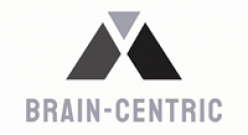Expertise (coupled with efficiency) is a critical workplace capacity. The challenge is to activate the potential of our learners, but also to be agile, competitive, and empathetically responsible for the consumers we serve.
An employee’s healthy connection to job and place of employment is essential to sustain a lifelong learning approach where social contribution is tangible, and where personal fulfillment is balanced with corporate interests. With Brain-centric Design (BcD), learners can achieve their true potential and make meaningful contributions that give them a sense of belonging, and a personal sense of purpose, while advancing corporate goals. We achieve these attributes and skills because BcD’s model promotes Long-term Potentiation.
Long-term Potentiation (LTP) is a physical change in the brain – in a good way – at the synapse. The synapse is the currency of learning. Daily intentional use of classroom activities serves to anchor each learner’s understanding in a favorite word or concept that supports growth at the synapse. On the axon/terminal side, presynaptic release mechanisms activate more neurotransmitters and release them into the synaptic cleft. On the other side of the synapse, dendrites activate significantly more post-synaptic receptors to support “firing and wiring” of neurons for stronger and more myelinated connections. In other words, the model is building structures in the learner’s brains that result in learning with deep understanding.
The outcomes are immediate. New learning is stored – remembered – as near-permanent instead of being forgotten shortly after presented. This scientific breakthrough was presented to the world at Columbia College Teacher’s University to educational professionals, administrators, and leaders from more than 50 countries where it was announced – in peer-reviewed journals – describing how BcD pedagogy increases long term potentiation and, in doing so, reverses the infamous Ebbinghaus’ Forgetting Curve (1850): Brain-centric Design Reverses the Ebbinghaus Curve
Learner Agency is the ‘magic’ that springs from this structure (BcD). When learners have the motivation and ability to take ownership of their learning, outcomes improve dramatically. Learners with agency are more likely to deeply understand and to demonstrate the persistence that is emblematic of adaptive expertise and growth mindset. They are more likely to enjoy their work/position and be happier. Learners with agency are self-organizing, proactive, self-reflecting, and self-regulated. While agency can’t be taught, it can be fostered. BcD facilitators know how to support student autonomy, competence, and relatedness to the content presented in the BcD model.
Autonomy, mastery, and a sense of purpose are fundamental attributes to intrinsic motivation. These, in turn, are foundational blocks of learner agency. Learner agency implies an intrinsically motivated desire on the part of the learner, which goes beyond basic engagement – where a learner engages with the work for its own sake, not just for extrinsic motivators such as receiving good grades, pleasing bosses or punching the clock.

